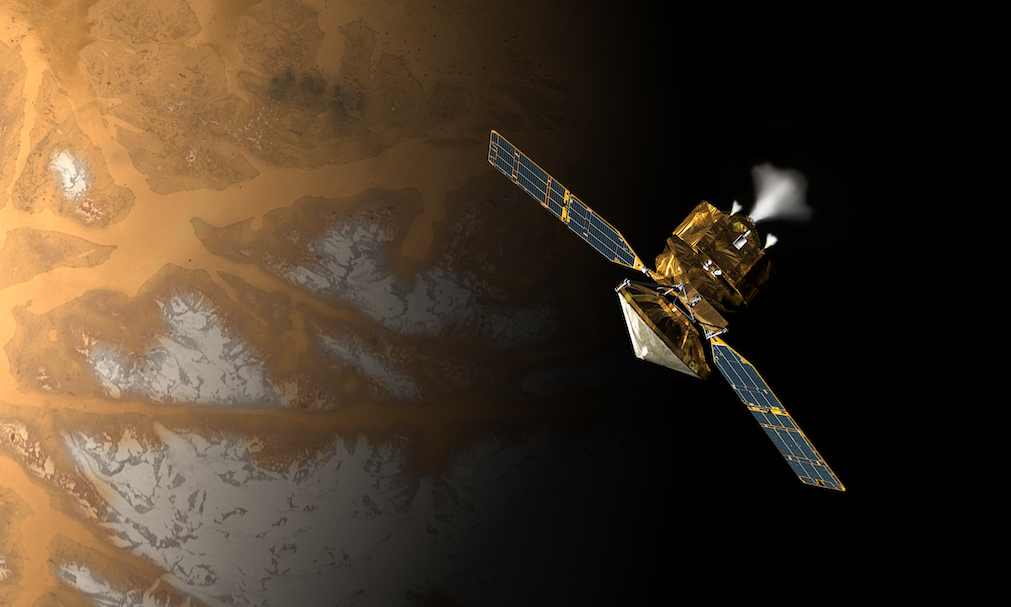
The Martian rover Opportunity has become famous for its amazing longevity, but it is not the only one; orbiting spacecraft also usually enjoy long lifespans, and today the Mars Reconnaissance Orbiter is celebrating its 10th year exploring Mars from above. It has helped to revolutionize our understanding of Mars and its complex geological history as well as, of course, sending back thousands of incredible high-res images of the Martian surface.
Mars Reconnaissance Orbiter (MRO) first arrived at Mars on March 10, 2006. Its purpose was to analyze the Martian environment from orbit, studying the geology and photographing the surface in unprecedented detail. It did not disappoint; if anything, it has exceeded expectations. Building on work from earlier orbiters, it has revolutionized our view of the Red Planet, revealing it to be much more than just a red, dusty, and mostly barren rocky world. It is a place with a complex geological history, and, in some ways, is still active today. MRO has provided the best view yet of giant dust storms, clouds, sand dunes, avalanches, ice caps, ancient canyons, and riverbeds, as well as traces of briny water still flowing on the surface today. MRO has helped scientists to better understand how Mars transformed from a once very wet place with abundant water to the colder, drier desert we see now.
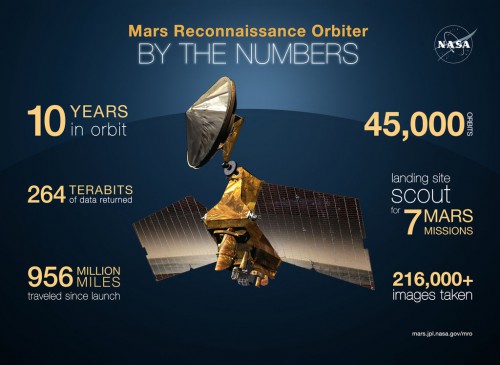
Looking at the mission “by the numbers” shows how impressive it has been so far:
- 10 years in orbit
- 264 terabits of data returned
- 956 million miles traveled since launch
- 45,000 orbits
- landing site scout for seven other missions
- 216,000+ images taken
Of the seven missions currently active at Mars, MRO returns more science data than the other six combined.
“This mission has helped us appreciate how much Mars – a planet that has changed greatly over time – continues to change today,” said MRO Project Scientist Rich Zurek of NASA’s Jet Propulsion Laboratory in Pasadena, Calif.
All six of the orbiter’s science instruments are still active, even seven years after completion of the initial primary science phase of the mission. MRO has been able to study underground geologic structures with radar and monitor the atmosphere, including observing the weather of the entire planet on a daily basis. In that sense, MRO has been playing the role of Earth-orbiting satellites, except at Mars instead. Like the rovers, the longevity of the spacecraft is a testament to the incredible engineering and design that went into this mission.
“The Mars Reconnaissance Orbiter remains a powerful asset for studying the Red Planet, with its six instruments all continuing capably a decade after orbit insertion. All this and the valuable infrastructure support that it provides for other Mars missions, present and future, make MRO a keystone of the current Mars Exploration Program,” said Zurek.
MRO has also assisted with the process of choosing landing sites for rovers and landers. The HiRISE camera is able to image very small details on the surface such as large rocks and boulders, helping scientists to evaluate potential landing sites in terms of safety. Along with another orbiter, Mars Odyssey, MRO send data back to NASA’s Deep Space Network on Earth, which increases the productivity of missions on the surface of the planet. Even potential landing sites for future human missions are being looked at by MRO.
The HiRISE camera has photographed some of the rovers themselves down on the surface; you can even see the wheel tracks left behind in the sand. Such high-res imagery is used to help plan driving routes for the rovers, to avoid obstacles and drive on the safest terrain. MRO was even able to obtain images of the descent of the Mars Phoenix Lander in 2008. Both the lander and parachute can be clearly seen in the images, an amazing feat.
One of the most significant and tantalizing discoveries by MRO has been the Recurring Slope Lineae (RSL), the flow of small amounts of liquid water on Mars’ surface still occurring today. It may not be pools or lakes, and it is briny rather than fresh water, but just the fact that there is any liquid water on Mars now is a fantastic finding. The findings were published in a paper last year. MRO had monitored the RSL for several years, before being able to analyze some of them in enough detail to determine their composition. As it turned out, and had been theorized, the dark, narrow streaks on sun-facing slopes in the mid-latitudes and equatorial regions were deposits of hydrated salts, left over from briny water which briefly ran down the slopes before sublimating. Fresh water would quickly sublimate into the atmosphere, since the atmospheric pressure and temperatures are too low for liquid water to normally remain long on the Martian surface.
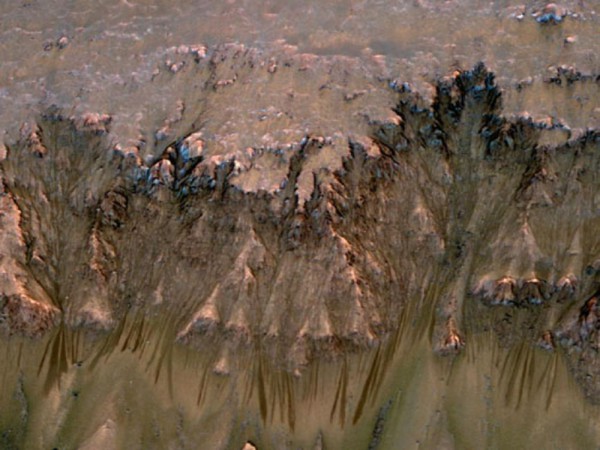
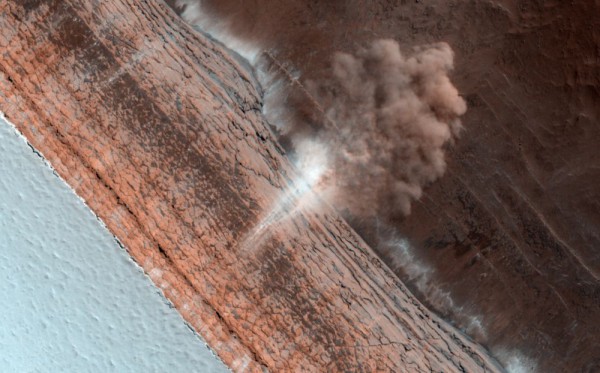
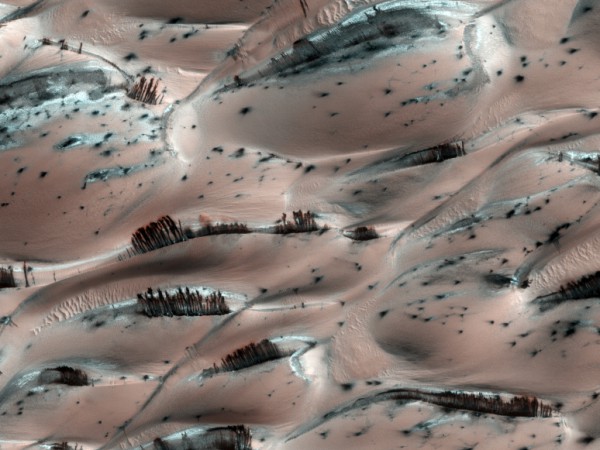
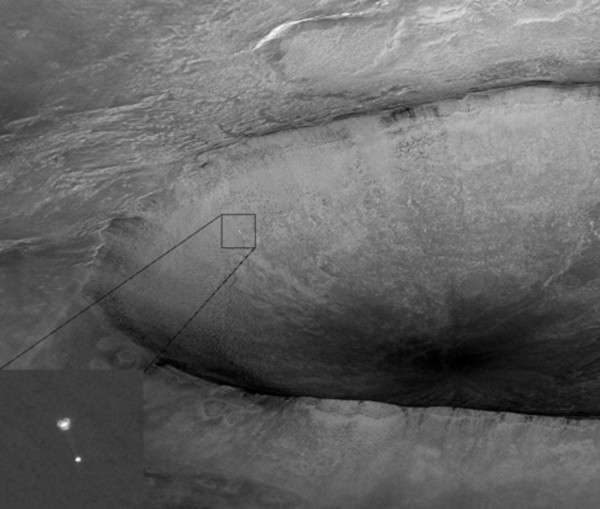
“We found the hydrated salts only when the seasonal features were widest, which suggests that either the dark streaks themselves or a process that forms them is the source of the hydration. In either case, the detection of hydrated salts on these slopes means that water plays a vital role in the formation of these streaks,” said Lujendra Ojha of the Georgia Institute of Technology (Georgia Tech) in Atlanta, lead author of a report on these findings published Sept. 28 by Nature Geoscience.
“Our quest on Mars has been to ‘follow the water,’ in our search for life in the universe, and now we have convincing science that validates what we’ve long suspected,” said John Grunsfeld, astronaut and associate administrator of NASA’s Science Mission Directorate in Washington. “This is a significant development, as it appears to confirm that water – albeit briny – is flowing today on the surface of Mars.”
MRO’s confirmation of the water was based on three key technologies: the telescopic camera resolution which can resolve features narrower than a driveway, spacecraft longevity to track seasonal changes over several Martian years, and imaging spectroscopy to map surface composition.
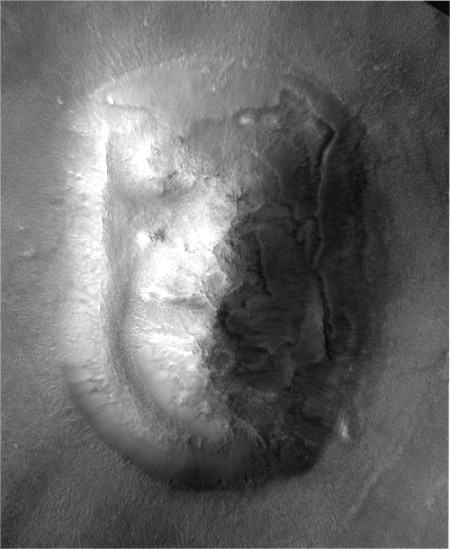
From the paper:
“Recurring Slope Lineae (RSL) are seasonal flows on warm Martian slopes initially proposed, but not confirmed, to be caused by briny water seeps. Here we report spectral evidence for hydrated salts on RSL slopes from four different RSL locations from the Compact Reconnaissance Imaging Spectrometer for Mars on board Mars Reconnaissance Orbiter. These results confirm the hypothesis that RSL are due to present-day activity of briny water.”
As noted by Michael Meyer, lead scientist for NASA’s Mars Exploration Program at the agency’s headquarters in Washington: “It took multiple spacecraft over several years to solve this mystery, and now we know there is liquid water on the surface of this cold, desert planet. It seems that the more we study Mars, the more we learn how life could be supported and where there are resources to support life in the future.”
However, the origin of the water is still a bit of a mystery. The three leading theories are melting ice, atmospheric deliquescence by hygroscopic salts, and subsurface aquifers. All of them have problems. There is thought to not be enough subsurface ice in the equatorial regions to explain RSL in those locations. Atmospheric deliquescence by hygroscopic salts seems unlikely since there is an observed absence of concentrated deliquescent salts on the surface, and it is still unclear how the Martian atmosphere can sufficiently supply water vapor every year to create RSL. Aquifers could discharge to form the RSL, but RSL on the tops of local peaks are difficult to explain this way. It may turn out that there is more than one cause of RSL, in different regions under different conditions.
MRO even helped to solve a long-standing “mystery,” the so-called Face on Mars. First seen by the Viking orbiters in the 1970s, it had the initial, if a bit hazy, appearance of a giant carved face in the Cydonia region. But much better, close-up images by MRO in 2007 showed it to be a wind-eroded mesa like many others around it.
While the question of possible life on Mars, in the ancient past or even present, still hasn’t been answered yet, MRO has enormously increased our understanding of what Mars used to be like, and how it changed over time to the planet we see now. In many ways it is similar to Earth, with seasons, clouds, ice, some water, old riverbeds and lakes, and perhaps even ancient oceans, yet so alien in other ways, with a thin carbon dioxide atmosphere and deadly radiation on the surface. It’s a planet which used to be much more like Earth is today, but something happened to change that. Thanks to MRO and other orbiters, landers, and rovers, we are now learning the secrets of this fascinating world.
MRO was built by Lockheed Martin Space Systems in Denver, Colo.
More information about the Mars Reconnaissance Orbiter mission is here. The thousands of spectacular images sent back so far can be seen here on the HiRISE website.
Want to keep up-to-date with all things space? Be sure to “Like” AmericaSpace on Facebook and follow us on Twitter: @AmericaSpace
Missions » MOM » Missions » MAVEN »




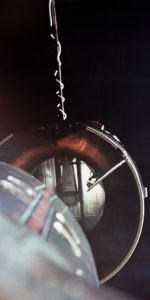
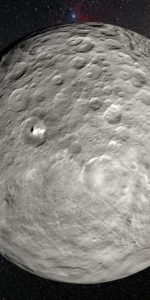
One Comment
One Ping
Pingback:Ten years at Mars: Mars Reconnaissance Orbiter celebrates a decade of discovery